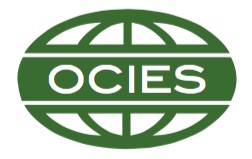Fiji at the crossroad: is the Indigenous community (iTaukei) ready for quality school-community partnership?
Keywords:
School-family-community-partnership, chiefly dispute, community cohesion, Learner-centred education, bottom-up traditional curriculumAbstract
Western models of school community-partnership are widely advocated in developed countries as a catalyst for a cohesive society. Educational authorities in Fiji now view western models of school-community partnership as a means to achieving a learner-centred approach, and as a support for community cohesion. This paper examines contradictions between the western models and the view that schools should uphold traditions in an Indigenous Fijian community divided by internal disputes. The school- community partnership models will be discussed focusing on why they are in conflict with the iTaukei traditional setting in rural villages. Exacerbating this gap is the chiefly conflict in Tawase[1] village. The village of Tawase is used as a case study, highlighting how its chiefly dispute over almost 50 years has fragmented the community and its satellite villages, affecting the local primary school support and children’s learning and eroding the social capital of the villages.
[1] Tawase village is the pseudonym.
Downloads
Published
Issue
Section
License
The International Education Journal: Comparative Perspectives is the official journal of the Oceania Comparative and International Education Society. The IEJ, (ISSN 1443-1475), publishes a general volume bi-annually in July and December and also publishes Special Editions occasionally. It is a free, open-access scholarly journal, managed by volunteers. There are no article processing charges, or any charges to authors.
In relation to intellectual property, as of 2020, the IEJ: CP claims only first publication rights; copyright of all work published in the journal remains with the authors under Creative Commons copyright license CC-BY-ND (4.0). Author(s) retain all rights to their works, ensuring that reference to the International Education Journal: Comparative Perspectives is clearly stated on any copies made or distribution. Submissions must not involve third parties with a claim to copyright, and be the sole work of the author(s). It is the responsibility of the author(s) to secure permission to reproduce photographs, illustrations, figures or tables. Single images, tables or figures can be re-used . If more than a single image or table are to be re-used authors must attribute first publication to IEJ: CP notify the IEJ: CP Editor. Authors may also make derivative works which are subject to these limitations.
See https://creativecommons.org/licenses/by-nd/4.0/ for more detail.
Re-distributed or used material must be referenced to the International Education Journal: Comparative Perspectives.
